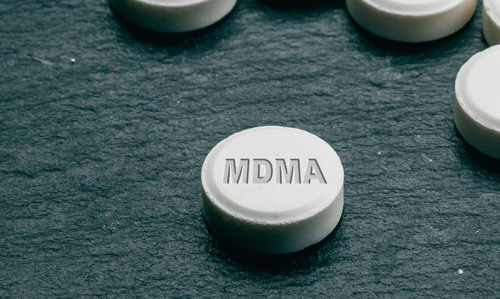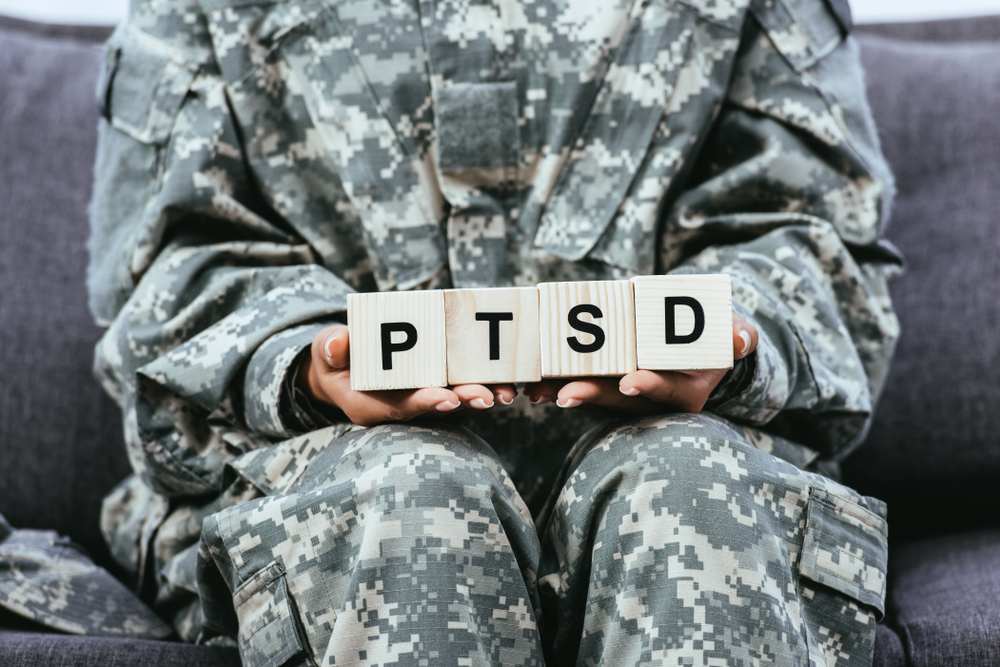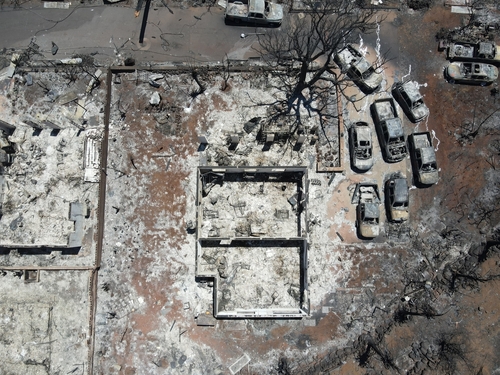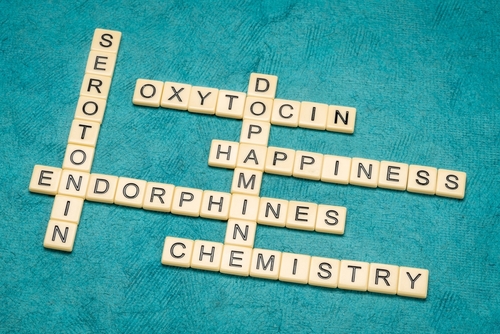What's On This Page?
ToggleToday, I will discuss what I know about MDMA and its effect on PTSD (post-traumatic stress disorder). About 350 million people worldwide suffer from this condition. About 13 million of those reside in the United States.
MDMA is a semi-synthetic drug that stands for 3,4-methylenedioxy-N-methylamphetamine). If you noticed the “amphetamine” in that chemical name, you can see it’s a type of “speed” which is a common name for drugs that are stimulants.
Sometimes you’ll hear people say it is ecstasy but these are not identical. MDMA is classified as an empathogenic drug and is being discussed in many healthcare forums for PTSD and it’s important to note that MDMA is not the same as ecstasy, which may not even contain any MDMA.
Women are approximately two or three times as likely as men to develop PTSD. Only about half of people with PTSD will ever seek treatment, they’ll just try to manage it on their own without professional medical interventions. Untreated PTSD will contribute to a higher suicide rate so if you know someone with this condition, please offer support to them, so they don’t feel alone, and of course, urge them to get professional treatment.
Just real quick, I am not a therapist, psychologist, or psychiatrist. This information is strictly for educational purposes so you can have a conversation with your own professional therapist or practitioner. For many years, researchers have been seeking potential treatments for PTSD as it is a very difficult condition to ameliorate. One can hope to manage it and that’s where MDMA comes in.
MDMA impacts everyone differently, but for some, it can be empathogenic which means it can make you feel more empathy and emotional closeness to others. It doesn’t foster more understanding or empathy in everyone though. It’s unfortunately like any drug (Rx or OTC), the effect varies for individuals, so it’s important to note that it is not across the board an “empathogenic” drug. To be clear, some users can become more paranoid and agitated on it, and some of this has to do with the person, and some has to do with the amount taken.

The experience can lead users to feel more in touch with their own emotions and the emotions of those around them. This heightened emotional connection and understanding is one reason why MDMA and other empathogens have been explored as potential therapeutic agents, especially in contexts like couples therapy or trauma therapy.
However, it’s worth noting that while some people experience increased empathy and connection under the influence of these substances, others might experience anxiety, paranoia, or other negative emotions. The effects can vary widely based on dosage, set and setting, individual differences, and other factors.
I’ll get to the benefits shortly, but some people reading this today have never experienced PTSD, and may not even be sure what it is exactly. Let’s go over that briefly, and keep in mind this is not a complete list. It is just a list of traumatic events that are most commonly reported by people, but again, it’s not complete.
Examples of PTSD-causing events include:
Combat Exposure: A lot of PTSD cases include those who have served in combat roles in the military. Combat stress or what may be called “battle fatigue” is still PTSD and symptoms can range from mild to severe depending on what was endured and witnessed. Often, losing a fellow soldier or sustaining major injuries is part of it. I deeply appreciate the veterans who dedicated their lives to serving our nation and preserving our freedom.
Physical Assault: Being attacked, beaten, or subjected to other forms of physical violence.
Accidents: Such as car crashes, workplace accidents, or other sudden and severe incidents.

Natural Disasters: Experiencing or witnessing the aftermath of events like hurricanes, earthquakes, major fires, or floods will cause PTSD. Losing one’s home and belongings to an event such as this contributes to lingering stress, not to mention injuries from mold exposure, or breathing smoke/ash, etc.
A couple of years ago, my community suffered from fires, and just now, Maui did too! It’s scary.
Terrorist Attacks: Some people have lived in regions affected by terrorist attacks, sirens going off, or high crime rates might experience PTSD. Escaping a near miss of a bullet during gunfire qualifies here too.
Imprisonment or Torture: Being confined against one’s will or being subjected to severe mental and physical torment. This ties in with combat exposure, or being a prisoner of war, being a prisoner, or having experienced kidnapping.
Sexual Assault or Rape: Women are statistically more likely than men to experience sexual violence.
Domestic Violence: Women are more frequently the victims of domestic abuse, which can lead to PTSD.
Childbirth-Related Trauma: Such as experiencing a life-threatening childbirth or a traumatic miscarriage.

Stalking: Persistent and unwanted attention can lead to severe psychological distress.
Loss of a Loved One: The sudden or violent death of a loved one, especially a child, can be profoundly traumatic. Grief, especially when intensified by such abrupt losses, is a frequent precursor to PTSD.
Witnessing Violence: Seeing someone else be harmed, especially if it’s a loved one, can lead to PTSD.
Treatments for PTSD
Traditional therapies, whether combined with pharmaceutical drugs or used alone, have benefited some individuals. However, many remain unresponsive to these conventional methods.
In recent years, an old substance has made headlines for its potential use in PTSD treatment: MDMA. I’m going to delve a little deeper into the mechanism of action of this drug, as well as its potential benefits and risks. In a few minutes, I’ll also explore other available treatments since I’m a pharmacist and can speak to those as well.
What MDMA Does in the Body – The Mechanism of Action
If you don’t really want to know how MDMA works in the body, go ahead and skip to the next section. For those of you interested in a little more details on how ecstasy causes “ecstasy” in the body, read on!
It’s known chemically as 3,4-methylenedioxymethamphetamine, which is how it got abbreviated to MDMA. It is NOT available as a prescription, at least not yet. Pharmaceutical companies are working on a version of that. It affects a variety of neurotransmitters, cannabinoids, and hormones in the body.
Bear in mind that every person is different, and as you continue to read, you may get excited about all the possible benefits. But as a pharmacist, I want to impose a little caution because, like any medication, side effects do occur especially with frequent or high doses, including neurotoxicity, addiction, and a depletion of serotonin that can lead to intense feelings of depression or what’s called a “comedown” in the days following administration.
Neurotransmitters that MDMA Impacts:
Serotonin: MDMA causes a massive release of serotonin and inhibits its reuptake making it work a little bit longer before going away. Serotonin as you know is involved in mood regulation, self-esteem, appetite, sleep, pain levels and other vital functions. The acute increase in serotonin (considered an antidepressant chemical) is what causes a sudden mood boost.
Dopamine: MDMA also leads to an increase in dopamine, another antidepressant chemical, albeit to a lesser extent than serotonin. Dopamine plays a role in reward, pleasure, and motor function. The body breaks down this chemical into norepinephrine by the way. Sometimes I call it norepi for short.
Norepinephrine (Noradrenaline or norepi): If using MDMA, one will experience a release of norepi, leading to heightened alertness and arousal, as well as an increase in heart rate and blood pressure. It’s a catecholamine just like dopamine, a feel-good hormone.

Cortisol: There’s a spike in cortisol due to its stimulating properties but this effect may change over time and usage. Cortisol levels may decrease with chronic use.
Oxytocin: The love hormone! This natural hormone is high when you’re falling in love, or when you give birth to a baby. Also, during nursing and milk suckling, oxytocin is released. It’s a bonding hormone tied to love and trust. And MDMA increases levels of oxytocin which causes more empathy which again is one mechanism of action by which MDMA helps people with PTSD.
Prolactin: MDMA can increase prolactin levels slightly, a hormone that plays a role in milk production and has various other functions in the body.
Vasopressin: This one is more honorable mention to be complete. There are a few papers showing that MDMA can influence vasopressin release, which can affect water retention in the body. It can cause a rare (but dangerous) effect of low sodium in the blood, termed hyponatremia.
Cannabinoids: This pathway is a little unclear to me, it does play a role, particularly the CB1 cell receptor, but it may be connected to the serotonin release, and it will impact behavior and emotions.
Benefits of Using MDMA for PTSD
Did you know that the initial use of MDMA was not recreational? It was synthesized in 1912 by Merck Pharmaceuticals to enhance psychotherapy sessions and revived in the 1980s where it was associated with dance parties and more. Today, it is seeing a resurgence in medical applications for PTSD.
Risks of Using MDMA for PTSD
Short-Term Side Effects:
Common side effects during an MDMA session can include nausea, chills, sweating, increased heart rate, and jaw clenching.
Risk of Dependency:
MDMA may be as addictive as other substances and drugs, there is the potential for misuse, abuse or emotional dependency even though other sites state that it’s not. That’s incorrect information. This is a stimulant drug and as such, of course, there is a risk! If you think about it, it’s common sense. It raises a bunch of different “feel-good” hormones, so who wouldn’t want more of that when your baseline returns to normal? So again, like many medications, MDMA carries this risk and should be used under supervision and at the lowest effective doses.
Prolonged and frequent use can lead to damage to serotonin-producing neurons, which can impact mood regulation. Once damaged the comedown is severe and can cause suicidal ideation. As such this drug should only be used under supervision and a controlled environment. Outside of that setting, there are very high risks.
Treatments for PTSD
Pharmaceutical Options
SSRIs and SNRIs: Selective serotonin reuptake inhibitors (SSRIs) like paroxetine and sertraline have been approved by the FDA for PTSD treatment. Similarly, serotonin-norepinephrine reuptake inhibitors (SNRIs) such as venlafaxine can also be effective. These drugs are among the most popular pharma agents used.
Prazosin: Traditionally used for hypertension, prazosin can also help reduce nightmares associated with PTSD.
Ketamine Infusions: Recent research has indicated that low doses of ketamine, administered intravenously, might have rapid-acting antidepressant effects, and can be beneficial for some people with PTSD. Always consult with a healthcare professional to determine the most appropriate treatment for individual needs and circumstances.
Treatments for Obsessive-Compulsive Disorder (OCD): While PTSD does not go hand in hand with OCD, there exists the likelihood of intrusive thoughts which is one component of OCD. So sometimes the medications or herbal treatments for this can help a person with PTSD.
Herbal and Natural Treatments:
St. John’s Wort: This herb has been used traditionally for mood disorders and might help alleviate some PTSD symptoms. It is an herbal treatment that can increase levels of serotonin and some of the other neurotransmitters listed above but it has a milder effect compared to MDMA. I wrote an article you may be interested in and it is entitled St. John’s Wort, Serotonin, and Depression.

Valerian Root: Known for its calming properties, valerian can assist with sleep disturbances often seen in PTSD patients. People complain about the stink of valerian so I should tell you here that there are now odorless supplements available sold at health food stores and online.
CBD: Cannabidiol, a non-psychoactive component of the cannabis plant, has shown promise in reducing anxiety and improving sleep. CBD is the non-psychoactive portion of the marijuana plant so it’s not as useful for sleep or pain, but it has a strong anti-inflammatory and antidepressant effect.
Pure CBD (as opposed to hemp) is sold in dispensaries located in some states but not all.
There was a recent STUDY on this actually. The researchers concluded that cannabis treatments (comprised of both CBD and THC) helped reduce feelings of anxiety, sadness, and tiredness, and made it easier for people with PTSD to socialize. The side effects included dry mouth, drowsiness, or tummy troubles, especially when THC was in the mix.
Other Potentially Useful Treatments:
Cognitive Behavioral Therapy (CBT): One of the most effective types of therapy for PTSD. It involves learning to identify and change negative thought patterns and behaviors that cause or worsen anxiety and traumatic stress responses.
Prolonged Exposure Therapy: A form of CBT where individuals are gradually exposed to memories, feelings, and situations that they’ve been avoiding due to their traumatic nature. The goal is to reduce the power these memories have over them.
Eye Movement Desensitization and Reprocessing (EMDR): A unique therapy technique that involves processing traumatic memories while focusing on an external stimulus, often a therapist’s moving finger or a tapping sound.
Group Therapy: Sharing with others who have had similar traumatic experiences can help individuals feel more understood and reduce feelings of isolation.
Pet Therapy: Interaction with animals, particularly dogs, has shown potential in helping individuals cope with PTSD.
Mindfulness and Meditation: Techniques that can help ground individuals and bring them back to the present moment, reducing the impact of traumatic memories.
Somatic Therapies: Focus on bodily sensations and physical tension patterns, aiming to release pent-up trauma-related energy through physical techniques.
Neurofeedback: A type of biofeedback that trains individuals to become more aware of their physiological responses and learn how to modify them.
Resources and Help for PTSD
There are several nonprofit organizations and resources dedicated to providing support, education, and advocacy for individuals with PTSD (Post-Traumatic Stress Disorder) and their families:
National Center for PTSD: Operated by the U.S. Department of Veterans Affairs, this organization is a leader in research and education on trauma and PTSD. They offer information, resources, and tools for both the public and professionals. Website: www.ptsd.va.gov
PTSD Foundation of America: This organization is committed to mentoring combat veterans and their families with combat-related PTSD. They offer various programs and support options. Website: www.ptsdusa.org
Sidran Traumatic Stress Institute: This nonprofit organization offers services, resources, and training to people who have experienced traumatic events. They focus on both individuals and professionals who work with trauma survivors. Website: www.sidran.org and THIS PAGE for those who want to learn how to better support a survivor.
Give an Hour: A nonprofit that provides free mental health services to U.S. military personnel and their families affected by the current conflicts in the Middle East. Website: www.giveanhour.org
BrainLine: This resource offers information about traumatic brain injury (TBI) and PTSD. They provide articles, personal stories, and expert Q&As about both topics. Website: www.brainline.org
International Society for Traumatic Stress Studies (ISTSS): This organization promotes the advancement and exchange of knowledge about traumatic stress, including PTSD. Website: www.istss.org
There are many others, both national and local, that offer resources, therapy options, support groups, and more. If someone is seeking help, it’s essential to consult with a mental health professional or counselor who can provide guidance tailored to individual needs.
Summary
In conclusion, while MDMA has shown significant promise in treating PTSD, it’s essential to weigh the benefits against potential risks. As with any treatment, individual responses can vary. Always consult with a healthcare professional when considering any new treatment modality.
Both pharmaceutical and herbal remedies can elevate the same neurotransmitters and hormones as MDMA, albeit at a more subdued level. Consequently, these alternatives may take longer to exhibit their effects compared to MDMA. However, the milder nature of these interventions often results in fewer side effects.
There are many other interventions and potential treatments for PTSD, please check out the resources and links above for more information.

Suzy Cohen, has been a licensed pharmacist for over 30 years and believes the best approach to chronic illness is a combination of natural medicine and conventional. She founded her own dietary supplement company specializing in custom-formulas, some of which have patents. With a special focus on functional medicine, thyroid health and drug nutrient depletion, Suzy is the author of several related books including Thyroid Healthy, Drug Muggers, Diabetes Without Drugs, and a nationally syndicated column.
